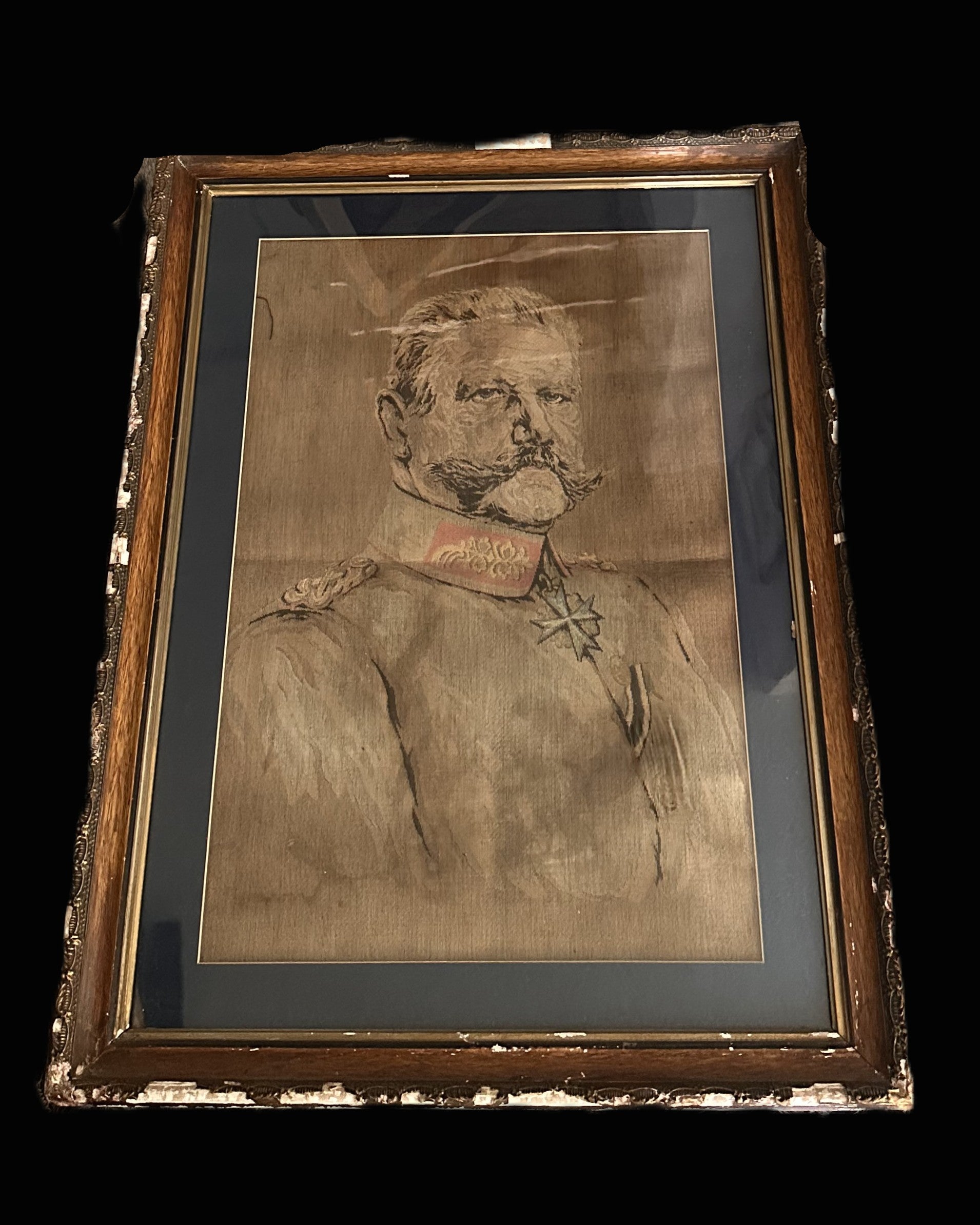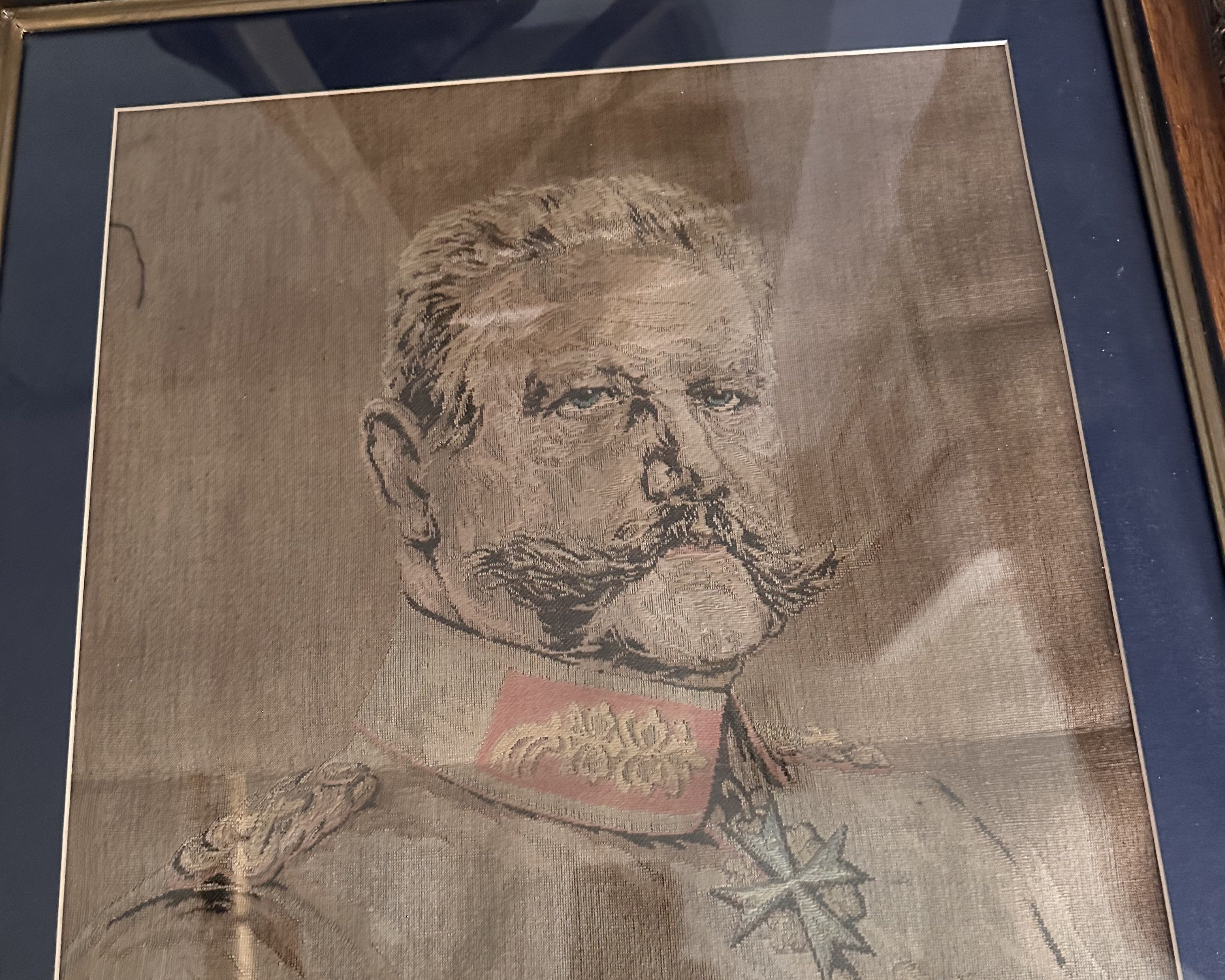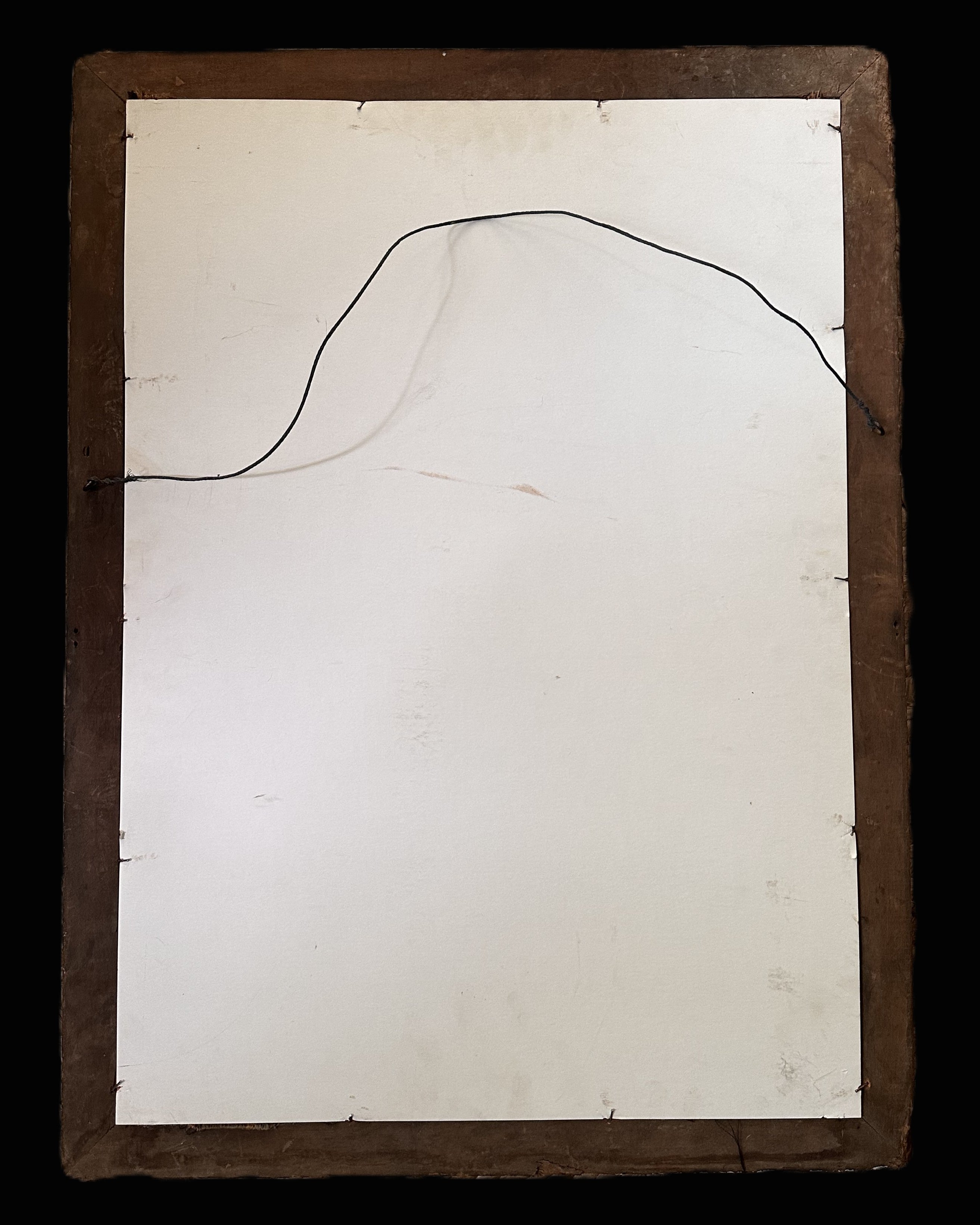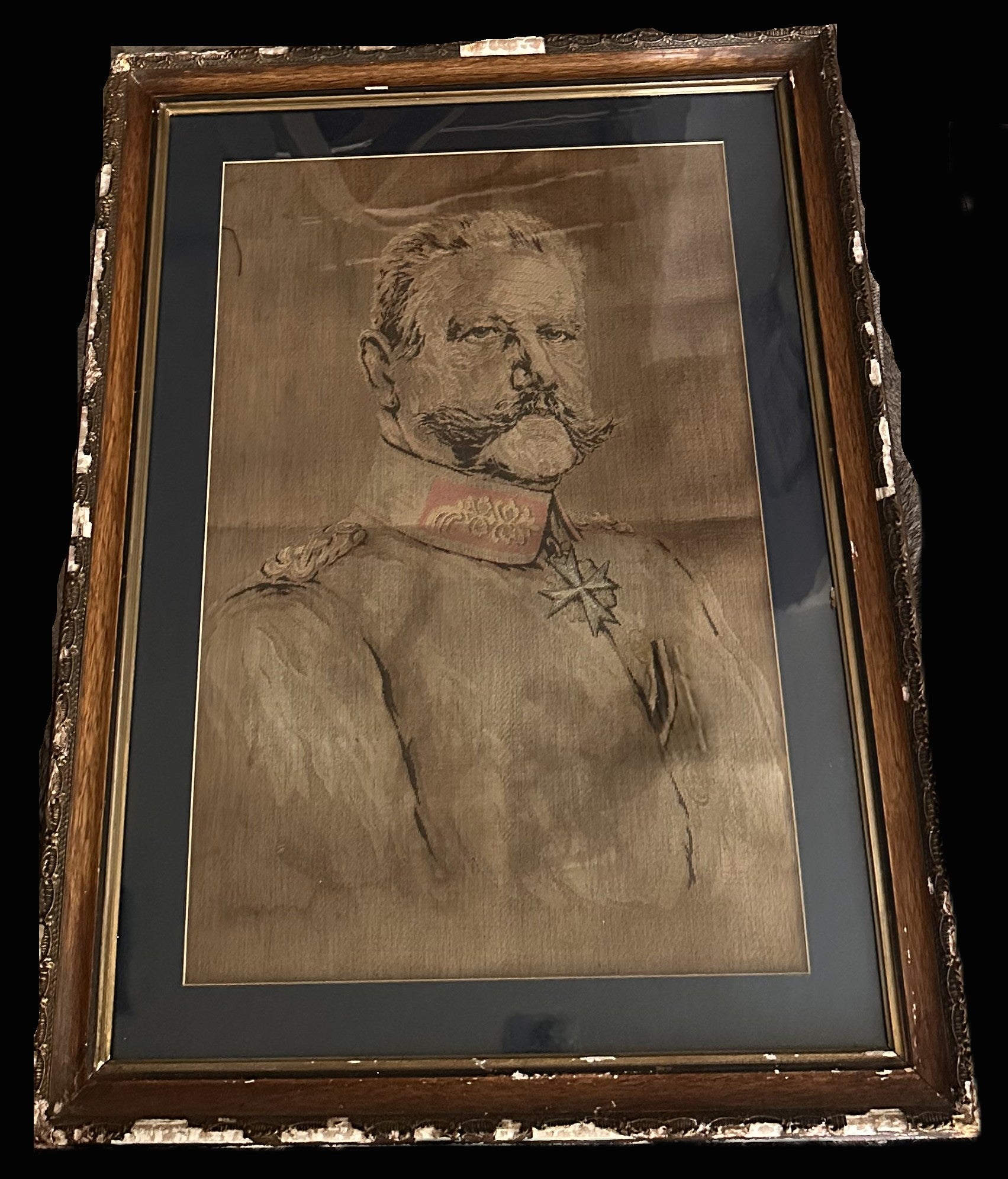Framed WWI-Era Tapestry Portrait of Generalfeldmarschall von Hindenburg
- Regular price
- $437.00
- Sale price
- $437.00
- Regular price
SKU: 18-74
A stately and unusual WWI-era tapestry portrait of Paul von Hindenburg, executed with finely woven threads that mimic the depth of a classical oil painting. This framed textile depiction offers a warm and textured alternative to standard prints, making it a sophisticated centerpiece for a militaria or European history collection.
Historical Context
Paul von Hindenburg (1847–1934), Chief of the German General Staff during WWI, became a national symbol of military leadership and conservative values in Imperial and Weimar Germany. His victories on the Eastern Front, particularly at Tannenberg and the Masurian Lakes, elevated him to the status of national hero, and his image was widely circulated across medals, busts, postcards, and—more rarely—woven tapestries such as this.
During WWI and the years immediately after, textile manufacturers in Germany and Austria produced small runs of military leader portraits for patriotic display in homes, officer clubs, and veterans’ halls. These tapestries often depicted monarchs, generals, or field marshals and were regarded as refined tributes. This example features Hindenburg in uniform, bearing the Pour le Mérite around his neck and the Grand Cross of the Iron Cross at his collar.
Physical Description
-
Medium: Woven tapestry textile (not a printed fabric)
-
Dimensions: Approx. 32 x 24 inches (including frame)
-
Frame: Period wooden frame with gold fillet and black matting; chipping and patina consistent with age
-
Portrait Details: Subtle color palette with red collar tabs and gold threading visible in shoulder epaulettes; Pour le Mérite and Grand Cross of the Iron Cross clearly rendered
-
Mounting: Professionally framed under glass with black mat board and wire hanger; reverse covered with white paper backing
Condition
The tapestry itself is in excellent condition with no visible tears, pulls, or fading. Fabric tension and weave remain tight and true. The frame shows surface wear and chipping along the edges, mostly at the top, but the glass and mounting remain secure. Some slight rippling of the textile is visible under glass due to age-related stretching.









